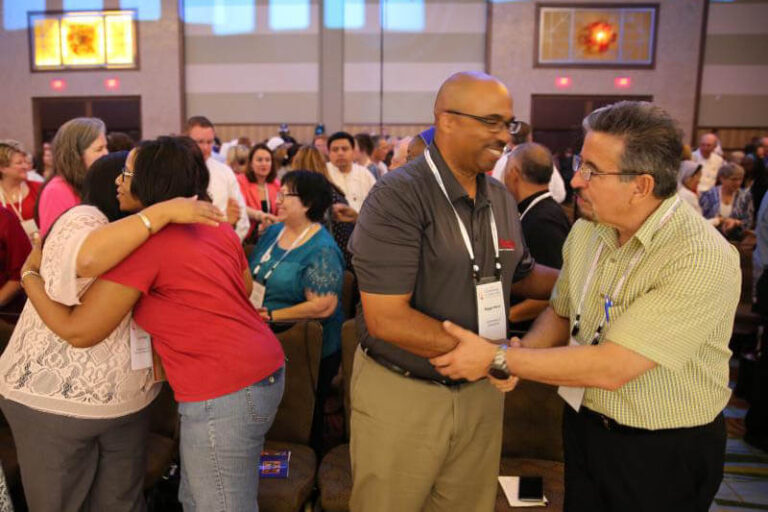Q. Togetherness seems to have become such an integral part of Catholicism, and extroverts tend to look disdainfully at those who prefer to sit at the end of the pew, are shy about grasping hands, shudder at the thought of being hugged or have difficulty with extemporaneous small talk. For me, being squashed in the center of a pew is agonizing, and there is no way I can focus on the Mass in that situation.
About once every two or three months, I feel compelled to go into our parish’s adoration chapel during Mass and follow the prayers and readings from there — or I find it necessary to stay at home and follow the Sunday Mass on television from my den. If that counts as missing Mass, there’s just nothing that I can do about it.
Agoraphobia is no joke, and even those of us with milder forms suffer greatly. But I believe that we are also loved by God. (Nokesville, Virginia)
A. No, your behavior does not count as missing Mass. And yes, you are surely loved by God. Agoraphobia is a very real disease, affecting as many as 1.9 million U.S. adults at some level in a 12-month period. It is characterized by significant anxiety in places where crowds gather, especially in situations where one might feel trapped and unable to escape.
This disease can justify one’s absence from Mass as certainly as would a high fever or a contagious cold. If it is more comfortable for you to pray in a side chapel, by all means do that. (Perhaps you might want to mention your situation to your pastor to help him to understand, and you might benefit by his words of approval.)
Or, if sometimes you find it necessary simply to stay at home and pray, do that. I credit you for your desire to share in the Eucharist to the extent you are able.
Your letter serves, too, as a reminder to us all to forgo judging the behavior of others — those, for example, who insist on sitting at the end of a nearly vacant pew or those who choose to stand in the back of the church. They could well be suffering from the same sensibilities you have described.
Q. I have been attending one Catholic parish in my hometown for several years now. As far as I know, this is the only Catholic church where parishioners do not shake hands at the sign of peace. I can understand churchgoers declining to shake hands if they have a cold or other ailment — or at times of widespread sickness.
However, at this particular parish, the congregation will not even turn around and greet others — let alone, shake hands. It is not really a big deal for me, but I do find it a little odd. Is there an explanation for this, or are parishes simply not required to follow the practice of shaking hands? (Portland, Oregon)
A. The General Instruction of the Roman Missal in section No. 82 indicates that the rite of peace should be a regular part of the liturgy in which “the faithful express to each other their ecclesial communion and mutual charity” before receiving the Eucharist. As to the actual gesture to be used, the general instruction leaves that up to national bishops’ conference, to be determined in accord with local culture and customs.
For the United States, the U.S. Conference of Catholic Bishops has noted that this would typically be done by shaking hands. So while this ritual can be eliminated in particular circumstances — a flu epidemic, for example — it should not be skipped regularly.
In 2014, the Vatican’s Congregation for Divine Worship and the Sacraments reminded Catholics that a certain restraint should mark the ritual so as not to distract from receiving Communion, that the gesture of peace should be extended by the faithful only to those nearest them and that such abuses as “the movement of the faithful from their places” should be avoided.
Copyright ©2017 Catholic News Service/U.S. Conference of Catholic Bishops.



